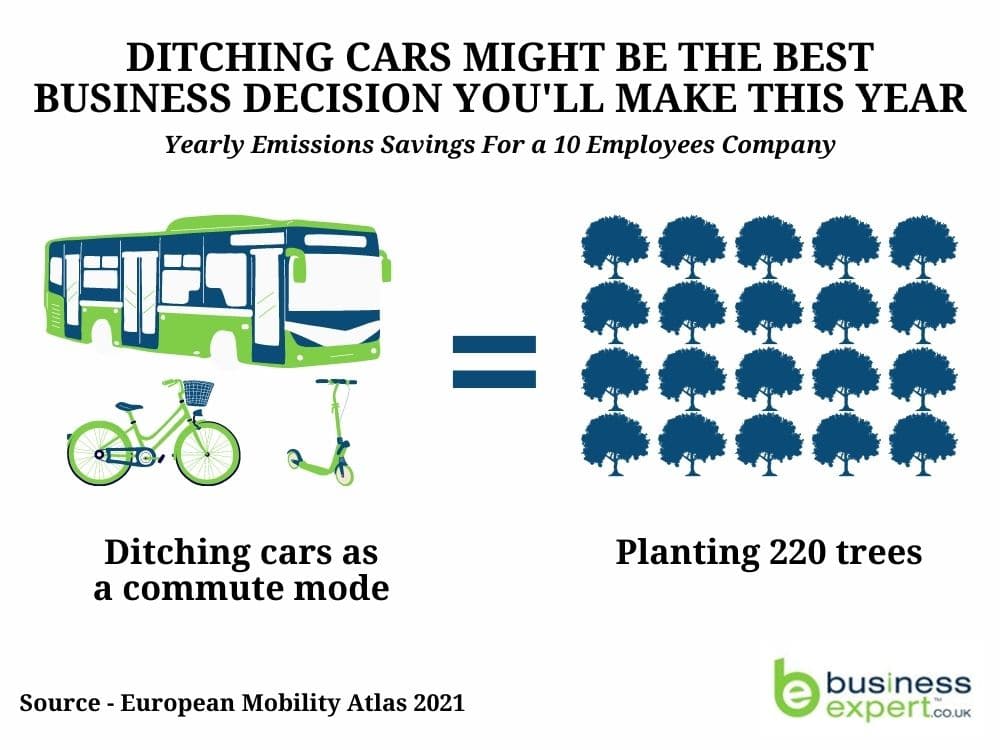As businesses begin to go back to the workplace, we show why driving to work is the single biggest contributor to climate change, in most cases.
We looked at a variety of ways businesses could lower their Co2. From adopting plant-based staff canteens, changing light bulbs to LEDs, or installing solar panels.
But while each has a tangible benefit to reducing overall carbon footprints, nothing comes close to ditching the internal combustion engine for it’s massive Co2 emissions.

5 Ways to Reduce Your Business Carbon Footprint
- Ditching Cars as a daily commute – 20 000 kg
- Changing Staff Canteen to Vegetarian – 1500 kg
- Installing 10 Solar Panels on Office Roof – 1100 kg
- Changing all LIghtbulbs to LEDS – 900kg
- Avoiding Food Waste – 1550 kg
This data is based on annual Co2 savings for an average sizes office of 10 people.
Ditching Cars Could be the Only Way to Meet Climate Targets

‘There’s a convenient myth propagated by people like Tesla,’ comments Daren Howarth, MD of CLevel, a leading UK carbon consultant for businesses’ “which is that buying an electric car is somehow an ethical choice, that you can still consume voraciously and curb climate change. The harder truth is that the very notion of personal vehicle ownership may be at odds with the kind of emissions reductions we urgently need.’
This view has been echoed via a recent report by the government’s Science and Technology Committee who have been wrestling with the problem of how the UK can make its ambitious climate targets by 2050. “In the long-term, widespread personal vehicle ownership therefore does not appear to be compatible with significant decarbonisation,’ the report concludes. “The Government should not aim to achieve emissions reductions simply by replacing existing vehicles with lower-emissions versions.”
Data Sources
- https://eu.boell.org/en/European-Mobility-Atlas
- shorturl.at/bruQR
